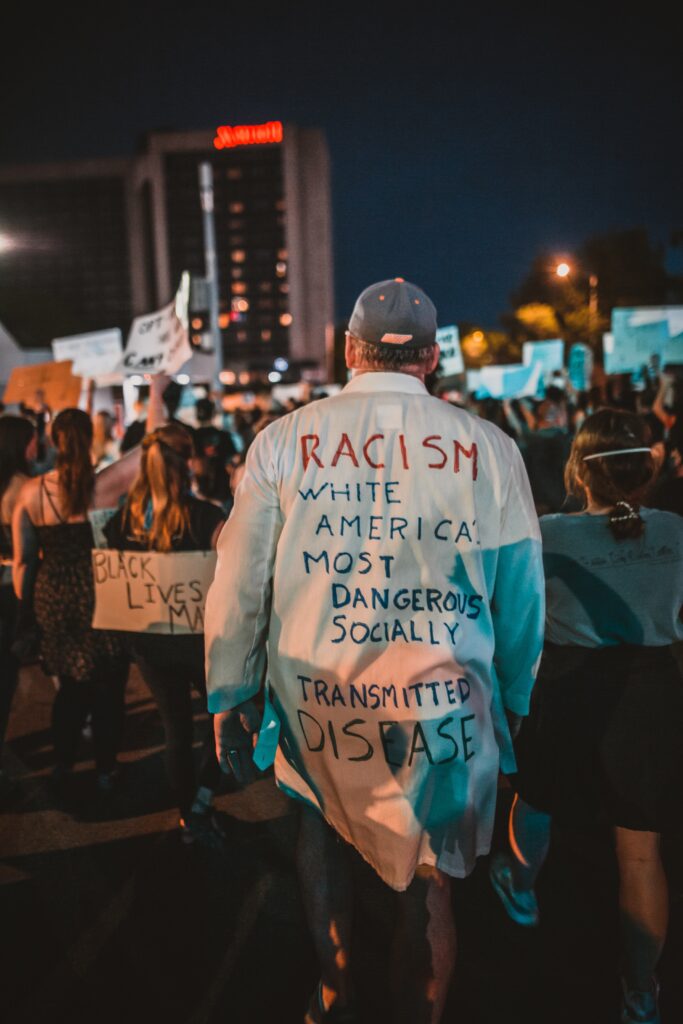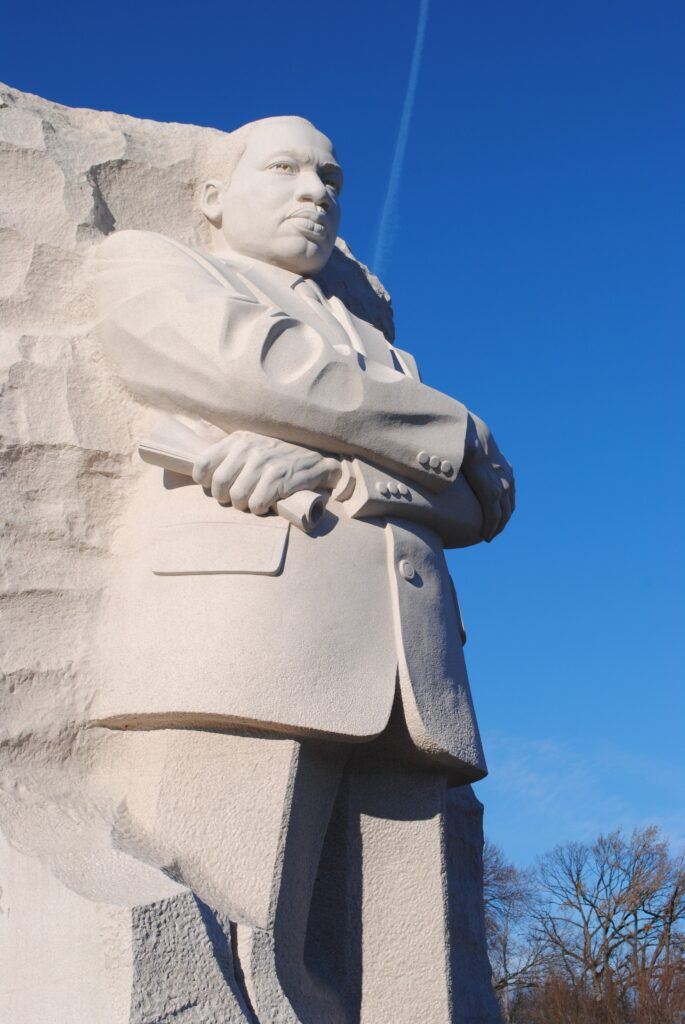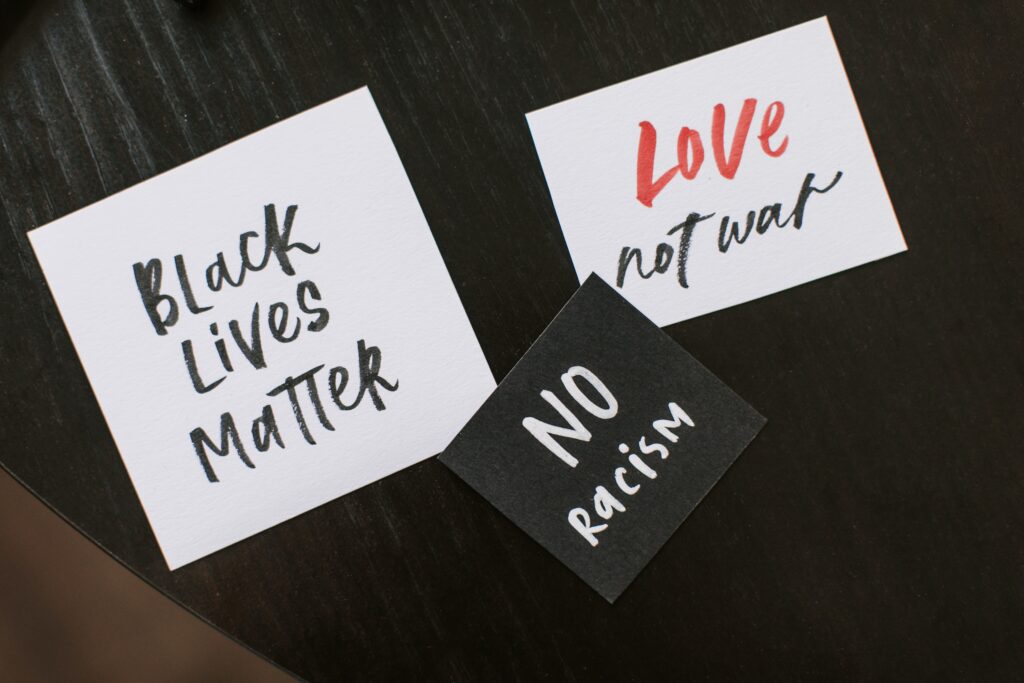
In November, 2021, a Georgia state court found three men guilty of murdering Ahmaud Aubrey. Travis McMichael shot him, his father accompanied this, and Bryan took a video of this horrific event happening. Each of the three men, Travis Michael, his father George McMichael, and their neighbor, William Bryan received life prison sentences. They were also later separately indicted and tried in a federal court for hate crimes, and in August, 2022 they were then sentenced to additional federal life terms, to be served simultaneously in in Georgia prisons with the Gerogia sentences.
Violence against unarmed black men in this country has continued for hundreds of years, and this case exemplified that it is still going on today. And let’s call the murder of Ahmaud Arbrey exactly what it was: A modern-day lynching of an innocent, 25-year-old Black man.
However, in the wake of the murder of George Floyd, Brionna Taylor, Ahmaud Aubrey, and many others, there has been at least somewhat of a racial reckoning and awakening for many Americans, as evidenced by the Black Lives Matter movement. The conviction of the three men for murder and their later conviction for a federal hate crime shows us that some courts are paying attention and in some cases, justice is being served.
The foreman of the federal jury was a 35-year-old Black man named Marcus Ransom. Mr. Ransom is social worker from Georgia, and he gave an interview to the New York Times following the verdict. During parts of the trial, Mr. Ransom recounted how he sobbed hearing about how the three murderers looked on apathetically as Ahmad Aubrey bled to death in the street. He also cried as a verdict was read aloud in court.
For Mr. Ransom, and other young Black men, hearing this evidence would probably have bene more traumatic than for almost any other sector of the population (save, perhaps, Ahmaud Arbery’s parents), because of their race. Marcus Arbery, Ahmaud Arbrey’s father, observed Mr. Ransom during the trial. Mr. Arbery later told the NY Times:
“Ahmaud was a Black man, I am a Black man, that juror was a Black man,” Mr. Arbery said. “We move through the world the same in a lot of ways. Because Ahmaud was Black and he is Black, he probably knows that this could have been him. He probably said to himself, ‘This could have been me’” (https://www.nytimes.com/2022/03/01/us/arbery-trial-juror-marcus-ransom.html)
The irony here is that, on one hand, finally, that both state and federal juries and their judicial systems were able to render a guilty verdicts is a major sign of progress. And yet in the process of this conviction, another Black man, Mr. Ransom, had to also endure pain and suffering. I don’t have a solution for how to ensure this doesn’t happen anymore. I do feel powerless in this regard. I do want to acknowledge Mr. Ransom suffered and endured pain for the greater good of society to make progress in the dismantling of systemic and institutional racism. Sometimes, in my psychotherapy work with clients, I encounter a similar feeling of powerlessness. I may not be able to change what a patient if dealing with, especially an external life circumstance like racism. But I can witness it and be with the person through their pain. And I can continue to work on my own unconscious racial biases and thoughts.

As I read about this case, I started to feel disdainful and judgmental towards the three men who murdered Mr. Arbrey. “They are so racist,” I thought. But then I reflected further, and though I am not filled with intense, explicit racism like the McMichaels and William Bryan, I do have unconscious racial biases and thoughts at times. As a white-identified person, I myself have to work on identifying my own unconscious racial biases and beliefs.
I don’t want to sound like I’m making some kind of a morality lecture, as if I am some kind of enlightened being. I am not. I was raised in California in a liberal family and have not had to overcome any deeply rooted prejudices, as other people might have to. However, I am committed to the process of deconstructing negative ways I was conditioned by the greater outside society as to how to view people of color. I am committed to having an open heart and to attempting to be a more loving person. And, as you read this, I hope you are too. I also know from my own work as a psychotherapist, that unless I work with these thoughts, they will just stay inside. Dismantling my own socially based racially biases is an ongoing process.
Back to the idea of hatred. For my own well-being I realized I couldn’t keep judging and scorning the men who murdered Ahmaud Arbrey. After I at let myself acknowledge my feelings of judgement and disdain, I sat with them for a while. I began to pray. I meditated. I recalled the quote from Dr. Martin Luther King Jr:
“Darkness cannot drive out darkness, only light can do that. Hate cannot drive out hate, only love can do that.”
-Dr. Martin Luther King

The McMichaels and William Bryan were steeped in hate when they murdered Ahmaud Arbrey. I could not hold on to judgement of them, I reflected, because that would move me in the direction of being hardened, rather than my goal of being as open-hearted as I can possibly be. The more I thought about it, these men must also be in some very deep suffering, having so much racism and hatred inside of them, which led them to commit such a terrible act. I hope that these three men will be able to truly reflect on the nature of racism and hatred, and to be able to dismantle some of these racial biases while they are in prison. They are also in need of love too, apropos Dr. King. Even though he had to suffer through hearing terrible, painful testimony during the trial, Marcus Ransom told the NY times: “I just prayed for everyone. For the jury. For Ahmaud’s family. Even the defendants.” It takes a highly evolved person to be able to do this.
At one level, it is a victory in this country that the murders of Ahmaud Arbrey have also been convicted of a hate crime, and that they have received life sentences for it. Going forward, I would ask you to hold in your mind and heart Aubrey, his mother and father, and his extended family, that they be healed as much as is humanly possible. When I read quotes from his mother and father, still in anguish over their 25-year-old son being murdered. I started to weep, because I have a son myself. As any parent knows, the love for their child is simply transcendent. Losing a child is some of the worse pain one can endure. I don’t think you really ever gets over the death of a child, but maybe you find a way to go on living and find some meaning in life.
I would also ask you to hold in your heart his murderers. If Marcus Ransom, the courageous and spiritually evolved jury foreman can pray for them, we can too. Unless these men, and others who hold racist beliefs, work to dismantle them, this polarized country cannot heal itself.

Here is a guided meditation, entitled “Social Justice Metta Meditation Honoring Ahmaud Arbrey:
Jazz Therapy Playlist, Week 1: Honoring Ahmaud Arbery
Finally, it’s time for jazz. Let us soothe our souls with some beautiful music. This week, to honor Ahmaud Aubrey, and his family, Marcus Ransom, and the jury, and to speak to the deep anguish which his family, and many in this country have felt, it is time to turn to jazz. I hope you enjoy this playlist.
Emotional Dwelling (Mirrors your mood):
“O Freedom,” Don Shirley, At Home with Don Shirley
Don Shirley was the pianist whose life was featured in the movie “Green Book.” He played Classical, he played Gospel, and he played Jazz. He was beyond categorization as a musician. This album is him solo on the piano; it is absolutely beautiful.
Emotional Elevation (To Feel Better)
“Waltz for Debbie,” Know What I Mean? Cannonball Adderley and Bill Evans, 1961
Emotional Reverie (To Dream and Remember)
“Solitude,” Duke Ellington and Coleman Hawkins, Duke Ellington Meets Coleman Hawkins, 1963, Impulse!
https://en.wikipedia.org/wiki/Duke_Ellington_Meets_Coleman_Hawkins
Emotional Tone Setting (To Intentionally Create an Emotional Vibe)
“Swing Low, Sweet Cadillac,” Live at Memory Lane, Los Angeles, 1967, Dizzy Gillespie
Emotional Galvanization (To Inspire)
“Mercy, Mercy, Mercy-Live,” The Cannonball Adderley Quintet, 1964, Cannonball Adderley
Emotional Innovation* (To Experience Something New)
“ (What Did I Do to Be So) Black and Blue?” Louis Armstrong
“ (What Did I Do to Be So) Black and Blue?” Louis Armstrong and His All-Stars: Satchmo Live In Berlin Friedrichstadtpalast / The Legendary Berlin Concert Part II, 1965 (https://www.45worlds.com/cdalbum/cd/cdjp1063)
“Somewhere over the Rainbow,” See You at the Fair, Ben Webster, 1964, Impulse.
https://open.spotify.com/playlist/4T29RLe89cf2iH1PdSG8Mh?si=bd0af8d5c08a414a
Song Spotlight of The Week* (Each week, we highlight one song from the playlist to talk about a little bit more in-depth.)
This week, we will be talking about (What Did I Do to Be so) Black and Blue?. The first version of this song you will hear Louis Armstrong sing was recorded on Nov. 4, 1931. In this song, he plays the trumpet and he sings. Now the lyrics of the song, as they were originally written, are very dated and racist. What do I mean by that? Let me explain. “(What did I do to be so) Black and Blue?” was composed in 1929 by Fats Waller; the lyrics are by Harry Brooks and Andy Razaf (https://en.wikipedia.org/wiki/Black_and_Blue_(Fats_Waller_song). The song was originally composed for a Broadway musical at the time entitled “Hot Chocolates,” and featured a Black woman singing this song, melancholy about her lover, a lighter-skinned Black man, rejecting her because of her darker skin color (https://invisiblemanapenglish.weebly.com/what-did-i-do-to-be-so-black-and-blue.html). Thus, she does identify intra-racial prejudices. Also, this song was intended to be humorous, especially for white audience (https://sites.google.com/site/discriminationofjazzmusicians/3-2-2-what-did-i-do-to-be-so-black-and-blue-by-louis-armstrong). A portion of the song lyrics read like this: “I’m white inside, but that don’t help my case/Cause I can’t hide what is on my face.” So we are hearing “I’m white inside,” and this does not affirm being Black at all. There is a communication here that Black people wanted to be white and are white on the inside. Now these lyrics are just dated; it was 1929 when the song was composed.
Louis Armstrong first recorded “Black and Blue” on November 4, 1931 (https://www.discogs.com/release/4865415-Louis-Armstrong-Ken-Burns-Jazz). The way he sang it was transformative, in that he takes the song and makes it directly about what it is like to experience racism because of being Black, and the resultant pain. In 1931, it was somewhat revolutionary for a Black man to be openly singing about his experiences with racism and the pain that ensued. This means that Black audiences heard their pain witnessed by Louis Armstrong’s artistry in his expression of the song; white audiences heard the sufferings of a Black man. This was new and it was daring.
Fast-forward three decades later, we come Monday, March 22, 1965. Now on this date, Louis Armstrong and his band, the Jazz All Stars, were in East Berlin to give a concert. This was their first time in the Eastern part (https://nyfos.org/louis-armstrong-performs-black-and-blue/) of the then-divided Berlin. This concert came just two weeks after March 7, 1965, which became known in the United States as “Bloody Sunday.” What happened on “Bloody Sunday?” On March 7, 1965, Civil rights leaders Hosea Williams and John Lewis lead over 600 people as they attempted to march from Selma, Alabama to Montgomery, to protest voting rights. The Alabama State troopers present eventually attacked the peaceful protesters, “…wielding clubs, bullwhips, and tear gas” (https://www.archives.gov/exhibits/eyewitness/html.php?section=2). Images of this brutality were captured by photographers and television cameras. The footage aired on a Sunday night, and ABC news interrupted their airing of the movie “Judgement at Nuremberg.” Now this movie was about the Nazis and their failing to stand up to Hitler resulted in the Holocaust. So the movie is interrupted, to broadcast the footage of what happened in Selma. Because of this, 50 million Americans saw footage of the protesters being beaten and brutalized (https://www.history.com/news/selma-bloody-sunday-attack-civil-rights-movement). “Bloody Sunday” was widely considered a turning point in the Civil Rights movement. This is a quote: “The events in Selma galvanized public opinion and mobilized Congress to pass the Voting Rights Act, which President Johnson signed into law on August 6, 1965 (https://www.history.com/news/selma-bloody-sunday-attack-civil-rights-movement).
So now, that brings us back to just 2 weeks later, in East Berlin on March 22, 2965, where Louis Armstrong and His All-starts are giving their concert. In this concert, they do perform “What Did I Do to Be so (Black and Blue?” However, Louis Armstrong makes some very important changes to the lyrics, which I want you to pay attention to. In the original lyrics, they read “I’m white inside/But that don’t help my case.” But now in this 1965 version, we hear a defiant Louis changing that to: “I’m right inside right, but that don’t help my case.” This is such a significant change to the lyrics, because we see Louis, in a very pellucid way, affirming his identity as a Black man. He is no longer going to minimize his Blackness, nor try to say he is “white inside.” No. Now he is proudly saying: “I am right just the way I am.” When you watch the video of him singing this, note the expression of anger that flashes across his face when he sees this. You can see this at about the 3:34 mark. In addition, Joe Nocera writes an excellent essay about Armstrong singing the song, which you can find here: https://nyfos.org/louis-armstrong-performs-black-and-blue/.
For this reason, I am putting this song in the category of “Emotional Innovation,” because the song engendered people to feel emotions they might not have felt before. This song allowed Black audiences to see their pain made into art by Armstrong, and it forced white audiences to witness their pain. I think there is an argument to be made that this song could also be included under the category of “Emotional Galvinization” as well, especially since the 1965 version came after “Bloody Sunday,” and “Bloody Sunday” was instrumental to further the Civil Rights movement. “The events in Selma galvanized public opinion and mobilized Congress to pass the Voting Rights Act, which President Johnson signed into law on August 6, 1965. So, this song could probably be in both “Emotional Innovation” and also “Emotional Galvinization.” Let me know what you think! In the meantime, I hope you do enjoy both versions of this song, the 1931 version, and the 1965 version as well.
Jazz Birthdays (Each week, we will highlight birthdays of jazz performers around the world, both deceased and alive. We are so grateful for their existence!) http://jazzbirthdaycalendar.com/


Notable Birthdays in October:
Wynton Marsalis (1961-Present); October 18th
Quite possibly the best living jazz trumpeter on the planet today (in my opinion). If you get the chance to see him live, well, make it happen!
Jelly Roll Morton 1890-1941); October 20th
This jazz pianist was foundational to influencing the development of jazz. Read more about him here:
https://www.biography.com/musician/jelly-roll-morton
Dizzie Gillespie (1917-1993; September 21st
This master trumpeter, bandleader, and composer was one of the founders of Be-bop, cementing himself in history as one of the greats in Jazz
https://www.arts.gov/honors/jazz/john-birks-dizzy-gillespie

Thank you for reading! Please visit our website: www.jazztherapy.com and leave us a comment! (It’s fine to tell me if this is too long! We want to hear from you so that this newsletter can be the best it can be! Tell us what you think! In what categories would you place this week’s playlist? What news/topics do you want to see featured?
Subscribe to our newsletter!